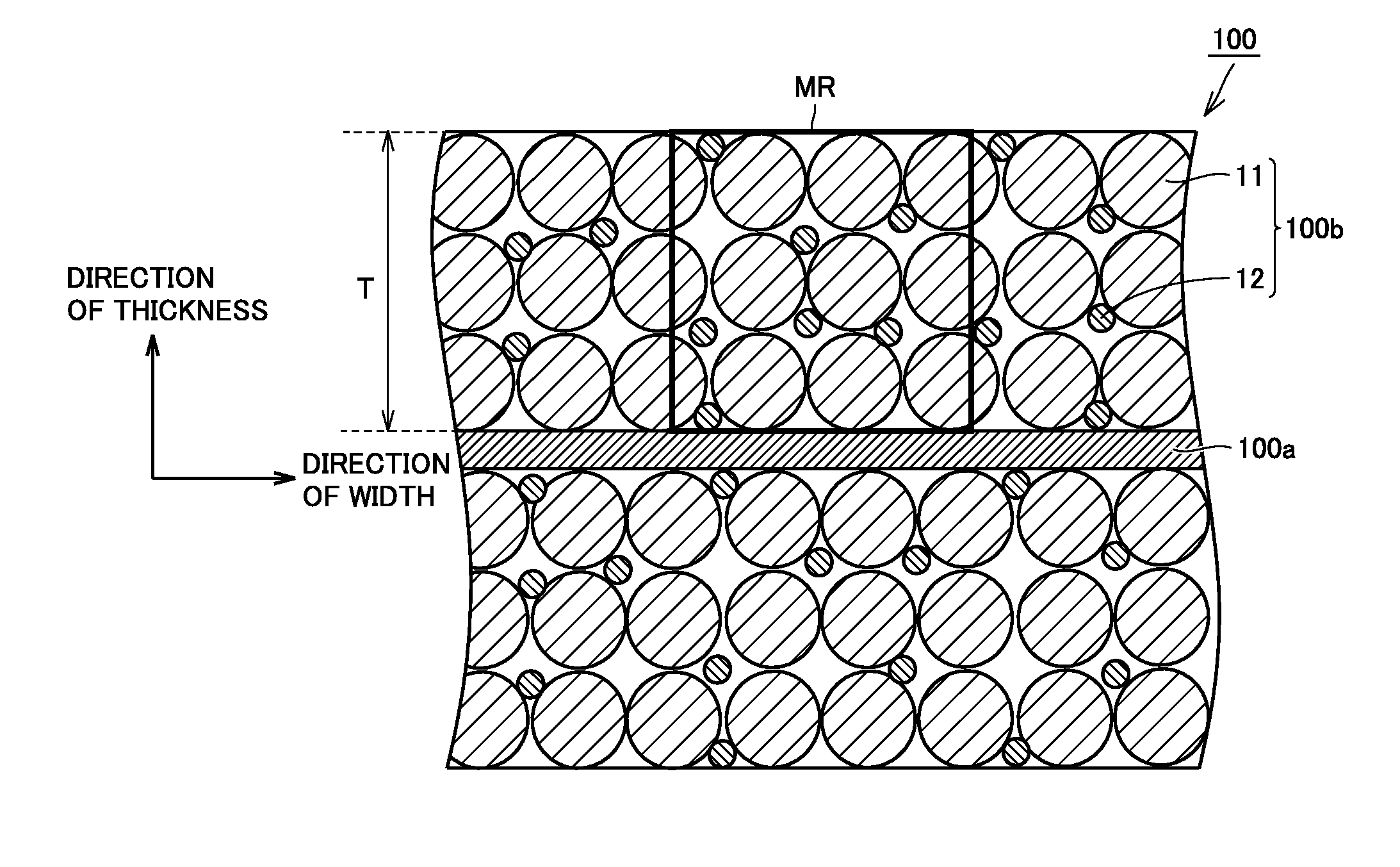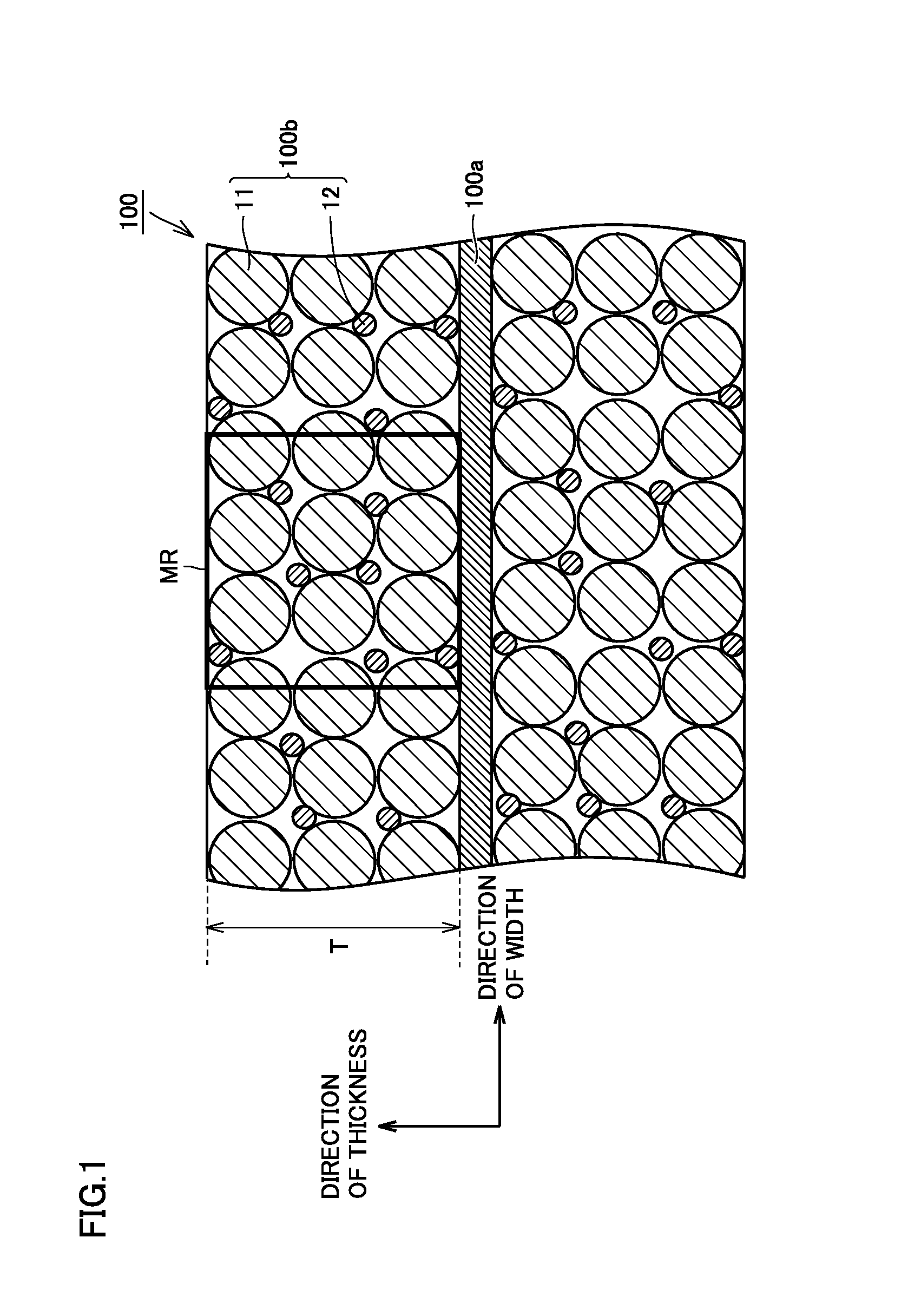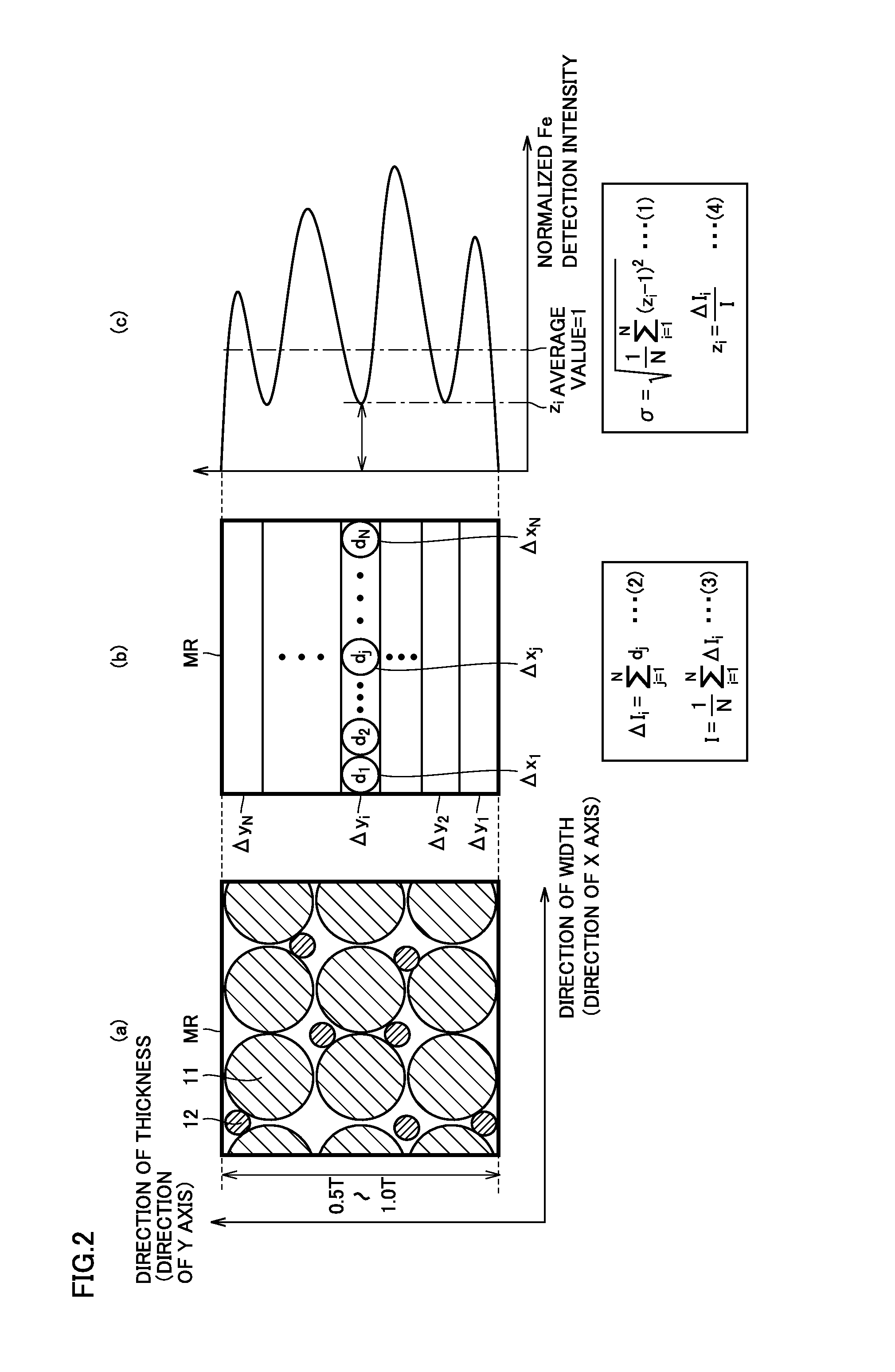Non-aqueous electrolyte secondary battery and method of manufacturing the same
- Summary
- Abstract
- Description
- Claims
- Application Information
AI Technical Summary
Benefits of technology
Problems solved by technology
Method used
Image
Examples
example 1
[0126](Step S100: Fabrication of Positive Electrode Plate)
[0127]Referring to FIG. 6, positive electrode plate 100, which was a sheet member in an elongated belt shape and had a non-composite-material portion in which positive electrode collector 100a was continuously exposed on one side in the direction of the short side, was fabricated. In this experiment, positive electrode plate 100 in FIG. 6 had a length dimension L1 of 4500 mm and positive electrode composite material layer 100b had a width dimension W1 of 94 mm.
[0128](Step S101: Fabrication of First Positive Electrode Composite Material Paste)
[0129]As first positive electrode active material particles 11, powders (average particle size: 6 μm) of LiNi1 / 3Co1 / 3Mn1 / 3O2, AB powders (conductive material), and PVdF powders (binder) were prepared. In the description below, “LiNi1 / 3Co1 / 3Mn1 / 3O2” is abbreviated as “NCM”.
[0130](1-1: Dry-Mixing)
[0131]A mixer including the PLM and the DS was prepared. NCM powders (9.5 kg), AB powders (0.52...
example 2 to example 4
[0160]A positive electrode plate was obtained and a non-aqueous electrolyte secondary battery was further obtained as in Example 1 except for change in time period for mixing in “1-2: High-Shear-Mixing” and “2-2: High-Shear-Mixing” above, as shown in Tables 1 and 2.
example 5
[0164]A positive electrode plate was obtained and a non-aqueous electrolyte secondary battery was further obtained as in Example 1 except that the PST(1) and the PST(2) were fabricated under conditions shown in Tables 1 and 2. A ratio of second positive electrode active material particles 12 in a total mass of first positive electrode active material particles 11 and second positive electrode active material particles 12 in positive electrode composite material layer 100b in Example 5 was 20 mass %.
PUM
 Login to View More
Login to View More Abstract
Description
Claims
Application Information
 Login to View More
Login to View More - R&D
- Intellectual Property
- Life Sciences
- Materials
- Tech Scout
- Unparalleled Data Quality
- Higher Quality Content
- 60% Fewer Hallucinations
Browse by: Latest US Patents, China's latest patents, Technical Efficacy Thesaurus, Application Domain, Technology Topic, Popular Technical Reports.
© 2025 PatSnap. All rights reserved.Legal|Privacy policy|Modern Slavery Act Transparency Statement|Sitemap|About US| Contact US: help@patsnap.com



